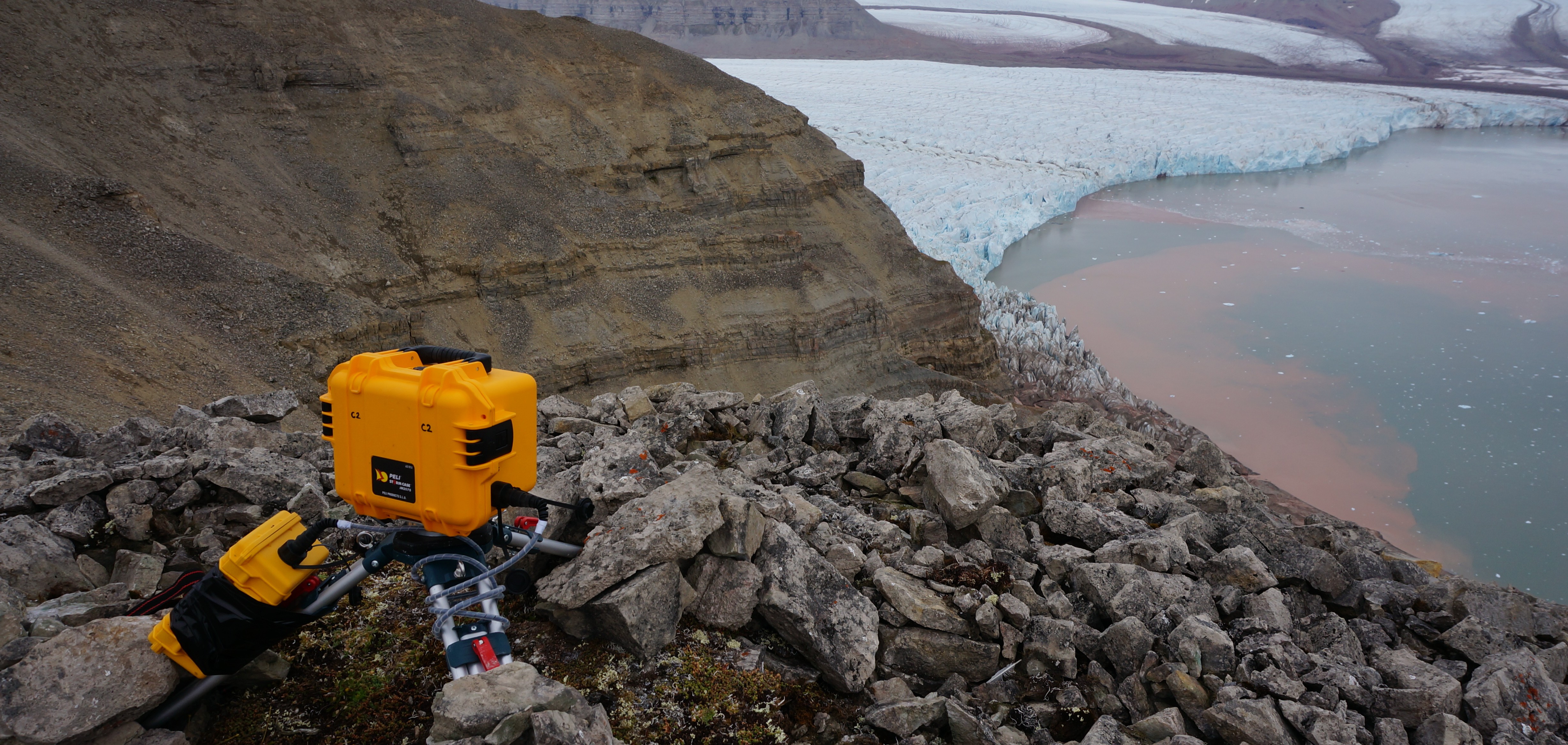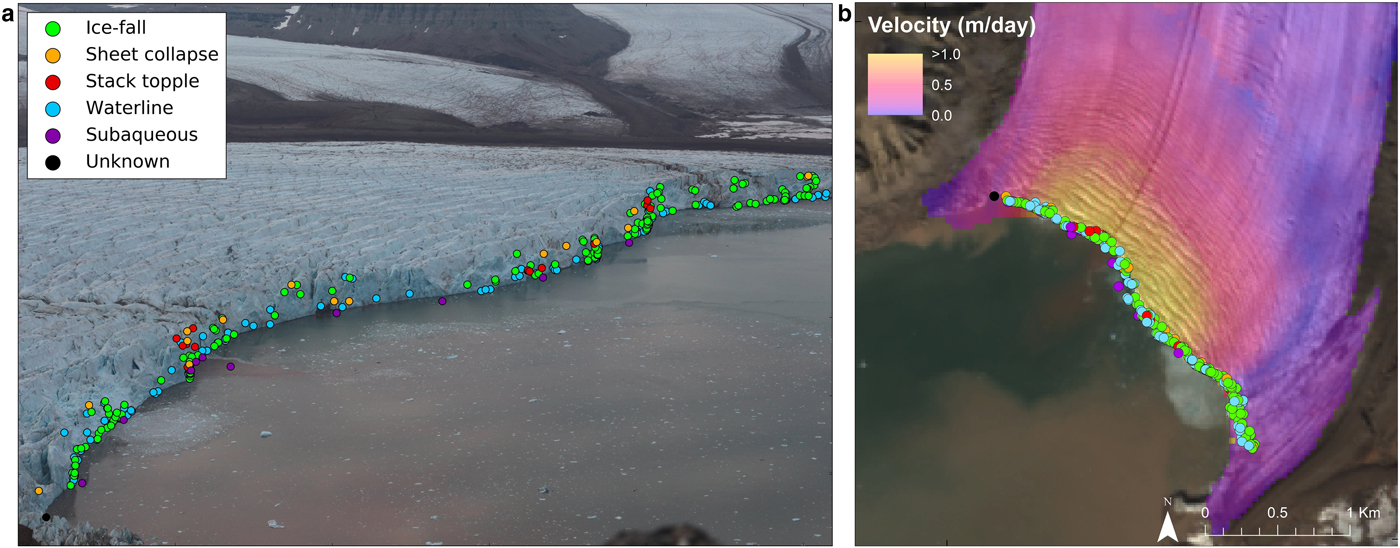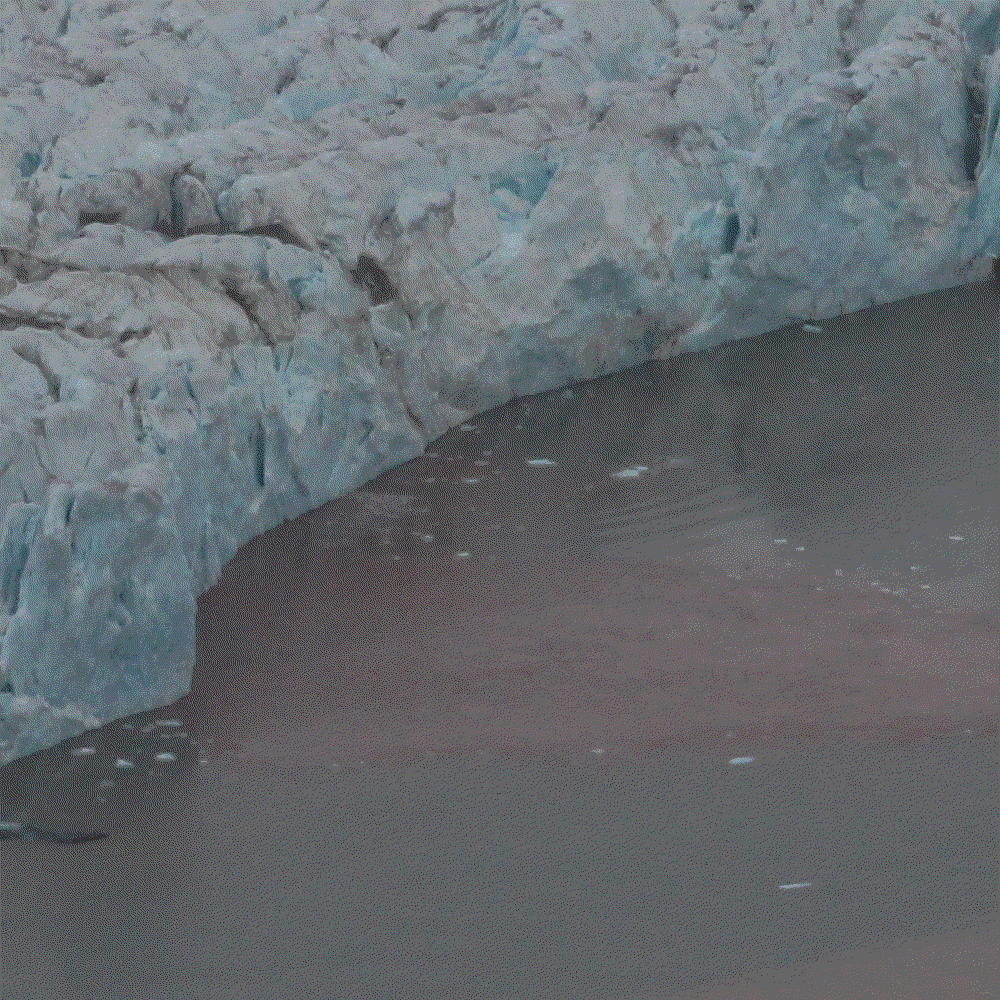Calving dynamics at Tunabreen, Svalbard, published in Annals of Glaciology
Annals of Glaciology has recently published our work examining calving dynamics at a tidewater glacier in Svalbard (click here to see article). In the study, we use time-lapse images captured every 3 seconds to document and analyse calving events at Tunabreen that occurred over a 30-hour period in August 2015.
 Our time-lapse camera installed in the field, overlooking the terminus of Tunabreen, a tidewater glacier in Svalbard. We captured images every 3 seconds over a 30-hour period in August 2015, from which we could distinguish calving events in high levels of detail.
Our time-lapse camera installed in the field, overlooking the terminus of Tunabreen, a tidewater glacier in Svalbard. We captured images every 3 seconds over a 30-hour period in August 2015, from which we could distinguish calving events in high levels of detail.
In total, we acquired 34,117 images. Compiled together, these images produced a sequence that we distinguished 358 individual calving events from. We could also discern the style of each calving event, inferring the controls on calving at this particular glacier front.
Calving at Tunabreen was characterised by frequent events during our monitoring period, with 12.8 events occurring every hour on average. Most calving events were small in magnitude, relative to those observed at other tidewater outlets such as those in Greenland (e.g. James et al., 2014), and other tidewater glaciers in Svalbard (e.g. How, 2018).
 All documented calving events and styles observed at Tunabreen, first distinguished in the image plane (left) and subsequently georectified to extract real coordinates and compare to ice velocity (right) (Figure 3 from How et al., 2019)
All documented calving events and styles observed at Tunabreen, first distinguished in the image plane (left) and subsequently georectified to extract real coordinates and compare to ice velocity (right) (Figure 3 from How et al., 2019)
Five calving styles were observed - waterline events, ice-fall events, stack topples, sheet topples, and subaqueous events - based on the relative size and mechanism of failure. A high majority of calving events (97%) originated from the subaerial section of the ice cliff, despite the fact that 60–70% of the terminus is below sea level. Subaqueous calving events were very rare, with only 10 observed over our monitoring period. The rarity of subaqueous events indicates that ice loss below the waterline is dominated by submarine melting, with the only local development of projecting ‘ice feet’.
Over two-thirds of observed calving events occurred on the falling limb of the tide. suggested that tidal level plays a key role in the frequency of calving events. Calving events were also roughly twice as frequent in the vicinity of meltwater plumes compared with non-plume areas, indicating that turbulent water promotes temrinus instability. The presence of a ~ 5 m undercut at the base of the glacier further supports the idea that ice is being excavated from below the waterline.

An example of a subaqueous calving event at Tunabreen, captured using our time-lapse camera. The section of ice front shown is approximately 350 m, and the iceberg is 40 m wide
We conclude that, based on the observations, calving rates at Tunabreen for this observation period may simply be paced by the rate of submarine melting. Similar dynamics have also been observed at other tidewater glaciers in Svalbard (e.g., Chapuis and Tetzlaff, 2014; Pȩtlicki and others, 2015), Greenland (e.g., Medrzycka et al., 2016) and Alaska (e.g., Bartholomaus et al, 2015). This being the case, the inference of calving rate from submarine melt rate would greatly simplify the challenge of incorporating the effect of melt-under-cutting in predictive numerical models; at least for this type of well-grounded, highly fractured glacier.
To read more about this research, please check out our paper published in Annals of Glaciology.
